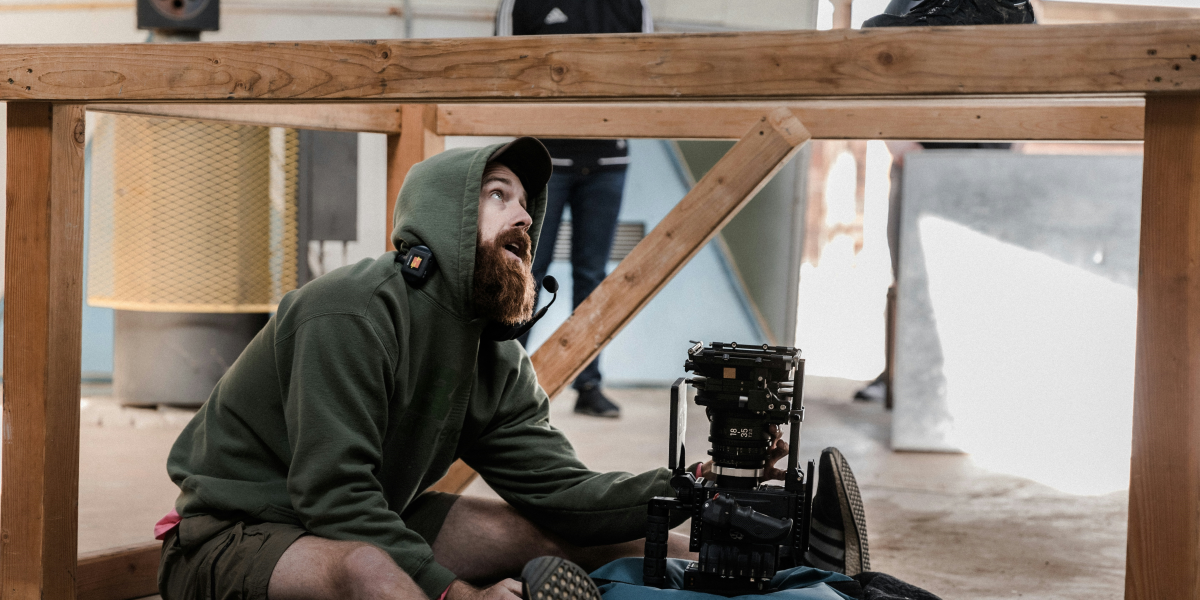Camera movement plays a vital role in elevating a video’s emotional impact and visual appeal. By carefully utilizing camera techniques, filmmakers can create more immersive and dynamic scenes that grab the audience’s attention. Several techniques are available to explore, including tracking shots, crane shots, panning, and tilting, each serving a unique purpose in storytelling.
Tracking shots involves moving the camera along with a subject, following them from behind or moving alongside them. This technique is often used in action scenes to immerse the audience in the movement, making them feel part of the story. Filmmakers can use equipment such as dollies or handheld gimbals to achieve smooth tracking. Crane shots, which involve raising or lowering the camera, provide a dramatic shift in perspective, often revealing a larger landscape or a dramatic transition. On the other hand, panning and tilting are simpler camera movements that allow filmmakers to capture expansive views or emphasize vertical aspects of a scene, such as a character’s presence or the scale of the environment.
Framing and Composition: Guiding the Viewer’s Focus
Framing in cinematography refers to how the elements within a shot are positioned and how they direct the viewer’s attention. Proper framing can turn an average scene into something visually captivating by emphasizing the most critical aspects of the shot. A key principle of framing is the rule of thirds, where the frame is divided into a grid of nine sections. Important elements are placed along the grid lines or intersections, making the composition feel balanced and engaging.
Additionally, the scene’s leading lines—natural or architectural lines—can guide the viewer’s eye toward the subject, adding depth and visual interest. Symmetry in framing often conveys balance, while asymmetry introduces dynamic tension, making the scene more compelling. Depth of field is another critical tool in framing, where adjusting the focus can blur the background or foreground, isolating the subject and creating a sense of depth.
Lighting Setups: Creating Mood and Enhancing Depth
Lighting is one of the most critical factors in setting the tone and mood of a video. It adds dimension and highlights key aspects of a scene. Mastering various lighting setups can drastically enhance the visual quality of a video. A foundational lighting technique is the three-point lighting setup, consisting of a key light, fill light, and backlight. The key light is the primary illumination source, while the fill light softens the shadows created by the key light. The backlight adds depth and separates the subject from the background, creating a more layered composition.
Lighting can also convey mood. High-key lighting, which reduces contrast and softens shadows, is ideal for creating a light, cheerful atmosphere. Conversely, low-key lighting, characterized by deep shadows and high contrast, is perfect for dramatic or mysterious scenes. Additionally, manipulating color temperature can further influence the mood. Warm lighting creates a cozy, intimate atmosphere, while cool lighting can evoke detachment or a cold, sterile feeling.
Crafting Visually Compelling Scenes with Advanced Techniques
To create visually stunning videos, cinematographers must combine techniques like camera movement, framing, and lighting to craft compelling scenes. A clear vision for the scene’s mood and message should guide the choices made for each shot. Storyboarding is an effective tool for planning each frame, helping filmmakers visualize how the scene will unfold and what techniques will work best.
For example, a slow dolly-in with warm lighting and a shallow depth of field can evoke an intimate, emotional moment. Alternatively, a fast-tracking shot combined with high-contrast lighting and dynamic framing can increase tension and excitement in an action scene. Experimenting with these techniques is crucial for discovering unique styles and enhancing storytelling through visuals.
The Impact of Advanced Cinematography on Visual Storytelling
Advanced cinematography techniques are not just technical skills; they are essential to telling stories through visual media. These techniques help create an atmosphere, emphasize key moments, and ensure that the audience stays engaged from start to finish. Whether it’s a high-budget film or an independent short, mastering these cinematographic tools can significantly elevate the quality of the video.
By using camera movement, framing, lighting, and creative experimentation, filmmakers can craft videos that captivate viewers and convey emotion, mood, and narrative in a way that purely visual elements alone cannot achieve. Mastering these techniques transforms ordinary footage into a cinematic experience that resonates with audiences, enhancing both the storytelling and the overall impact of the video.
Published by: Holy Minoza














